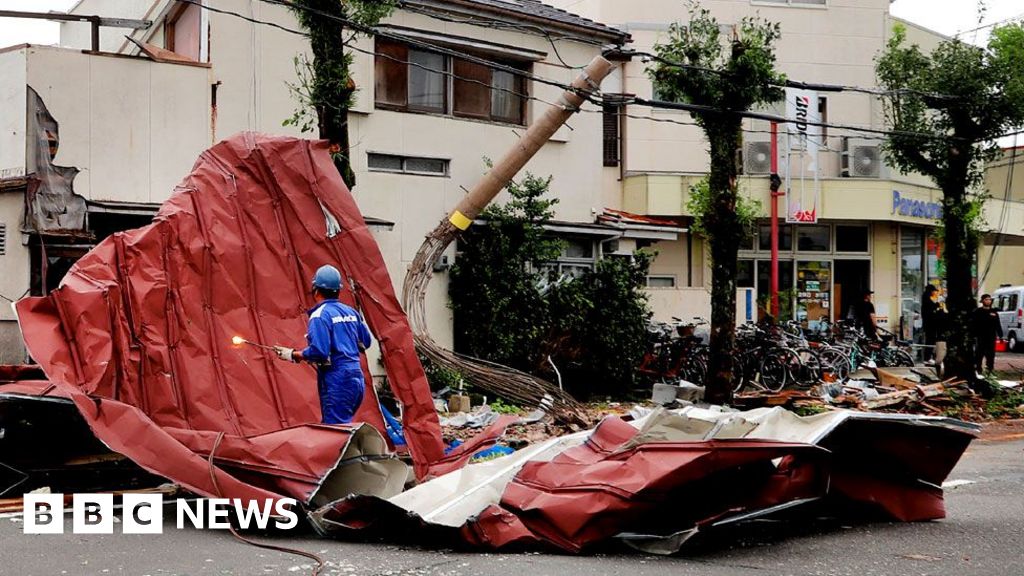 Reuters
ReutersTrains and flights have been canceled in Japan as one of the strongest typhoons to hit the country in decades flooded cities in its path.
Typhoon Shanshan made landfall in southwestern Japan on Thursday, killing at least six people and injuring more than 100 people.
Shanshan has now been downgraded to a tropical storm, with wind speeds still reaching 90 km/h (56 mph).
Thousands of people remain without power.
highest fifth level order The storm was approaching on Thursday, with winds reaching 252 km/h, warning millions of residents on the southern island of Kyushu.
The typhoon weakened into a severe tropical storm after landing, but it is still moving northeast. Up to 300 mm (12 inches) of rainfall is expected in some areas over the next 24 hours.
Residents in affected areas have been warned of landslides, flooding and widespread damage.
A trail of destruction could be seen on Shanshan’s roads, with many buildings damaged by flying debris, trees uprooted and cars overturned or flooded.
Heavy rain fell in Gifu and Mie prefectures on Saturday, with the Japan Meteorological Agency urging people to “remain vigilant against landslides, floods and overflowing rivers”.
“This is the first time I’ve seen a typhoon sweep across Japan,” a resident of the capital Tokyo told Reuters.
“The typhoon should have moved north from Okinawa. So, I didn’t expect it to be like this. I was surprised.”
All Nippon Airways and Japan Airlines have canceled dozens of domestic flights.
Bullet train services between Tokyo and Osaka were affected on Saturday and Sunday.
Shinkansen bullet trains in the central city of Nagoya were also suspended, and there were warnings that more trains could be stopped.
Map showing Shanshan’s predicted path

Japan will issue special typhoon warnings when severe storms occur, such as the warning for Shanshan. The same warning was issued in September 2022 Typhoon “Namado” approaches Kyushu – The first such warning issued for areas outside Okinawa.
A study released last month showed that typhoons in the region are forming closer to coastlines, intensifying faster and persisting longer over land due to climate change.


